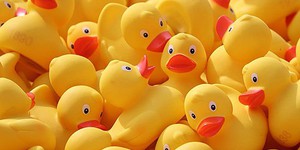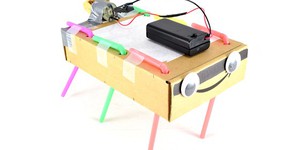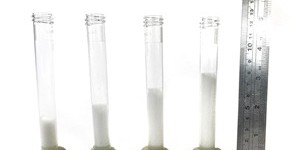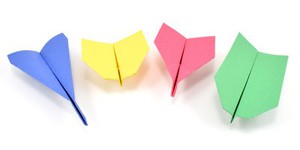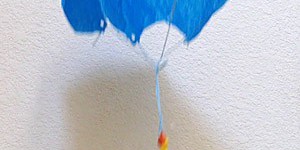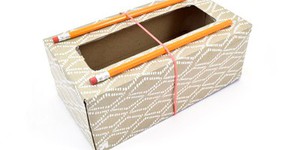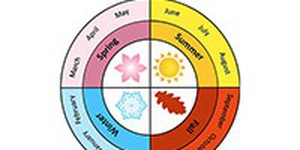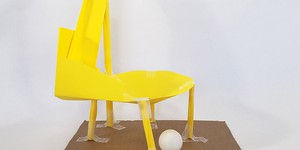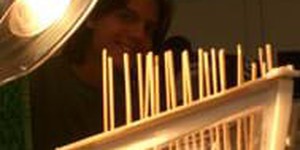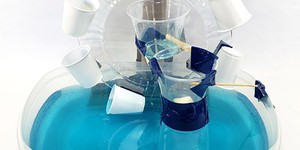Lesson Plans (247 results)
|
Select a resource
Sort by
|
Video Lesson
Grade: 6th-8th
8 reviews
Chemical reactions can result in interesting products! In this lesson, students learn how plastics are made by conducting a polymerization reaction in a simple milk-to-plastic transforming experiment. During their experiments, students will be able to compare the physical properties of their reactants (milk and vinegar) and their resulting organic casein polymer.
Read more
NGSS Performance Expectations:
Featured
Lesson Plan
Grade: 6th-8th
7 reviews
Junkbots are easy-to-build robots that you can make using a simple circuit and some recyclable materials. In this lesson, your students will learn about engineering design as they compete to build the fastest robot. No previous robotics experience is required!
Read more
NGSS Performance Expectations:
Lesson Plan
Grade: 9th-12th
1 review
In this lesson, students will employ the enzymatic decomposition reaction of hydrogen peroxide to investigate how chemical reactions are affected by enzymes and different substrate concentrations. Students will be challenged to control the rate of the reaction by adjusting the amount of substrate and thus changing the catalase activity. Foam production, created by the enzymatic breakdown of hydrogen peroxide into water and oxygen, will function as a proxy for the reaction rate. Based on their…
Read more
NGSS Performance Expectations:
Lesson Plan
Grade: 3rd-5th
18 reviews
Are paper airplanes a nuisance in your classroom? They don't have to be! Those distractions can be a constructive learning opportunity: use them to teach your students about the engineering design process. In this fun lesson, you will be the "customer" ordering a paper airplane, and your student teams will be engineering companies that will manufacture planes. Before they start making planes, they need to define the criteria and constraints of this engineering problem.
Read more
NGSS Performance Expectations:
Lesson Plan
Grade: 3rd
5 reviews
Forces, which we might instinctively describe as pushes and pulls, are acting on us at all times, but we cannot always see them. This hands-on lesson offers a fun opportunity to explore "invisible" forces like gravity and air resistance. Students will build parachutes and investigate how they allow skydivers to safely land.
Read more
NGSS Performance Expectations:
Lesson Plan
Grade: 1st
16 reviews
Young students know that they can hear sounds, but do they know what causes sounds? In this lesson they will learn that sounds are caused by vibrations, and they will build a fun musical instrument of their own.
In the Sound and Vibrations 2: Make Sprinkles Dance, students will learn that sounds can also cause vibrations.
Read more
NGSS Performance Expectations:
Lesson Plan
Grade: Kindergarten
In this lesson, students will create weather report cards of their birthday seasons and analyze them to identify differences and similarities between them. Based on their observations, they will explain how weather conditions change between seasons and discuss how we adapt to seasonal changes.
Read more
NGSS Performance Expectations:
Lesson Plan
Grade: 3rd
1 review
Everybody and everything that is opaque has a shadow. Shadows are fun to play with because you can change their shape and size or even make them disappear. In this lesson, students will first explore how shadows are made and how their appearance can be changed. Then students will use their gained knowledge to create and perform a shadow play.
Remote learning: Part 1 on this lesson plan can be conducted remotely. The Engage section of the lesson can be done over a video call, then students can…
Read more
NGSS Performance Expectations:
Lesson Plan
Grade: 6th-8th
1 review
Add a twist to a classic activity with this fun lesson plan. Your students will design and build a ball run for a ping pong ball using nothing but paper and tape. Their goal is to make the slowest ball run possible. How long can they make it take for the ball to go through their ball run? The 2022 competition is over, but you can see what students built and learn about the winners on the 2022 Engineering Challenge summary page. Teachers, note that
elementary
and
high school
…
Read more
NGSS Performance Expectations:
Lesson Plan
Grade: 9th-12th
Students investigate passive solar building design with a focus solely on heating. They learn how insulation, window placement, thermal mass, surface colors, and site orientation play important roles in passive solar heating. They use this information to design and build their own model houses, and test them for thermal gains and losses during a simulated day and night. Teams compare designs and make suggestions for improvements.Engineering Connection
Passive solar…
Read more
NGSS Performance Expectations:
Lesson Plan
Grade: 4th-8th
2 reviews
What would your students do if your town's water supply was cut off due to an equipment failure or natural disaster? Inspired by
Global Problem Solvers: The Series,
in this lesson plan they will tackle a real-world engineering challenge by building a prototype of a device that can manually pump water during an emergency. They will also think like entrepreneurs and come up with a business plan for how their device could be produced, sold, and used in the real world.
This lesson is one of…
Read more
NGSS Performance Expectations:
|
Explore Our Science Videos
Transform Yogurt into Spheres With Reverse Spherification
Build a Solar-Powered Car for the Junior Solar Sprint
Finding Pi Using Everyday Objects


